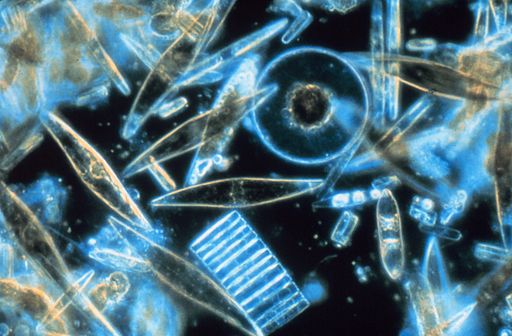Send us your algae bloom observation

2 steps to submit your photo observation
Once you have identified a descriptor for the type of algae bloom, and you have taken 3 high-quality photos of it, you now are ready to submit your algae bloom observation to us. There are 2 steps to the submission process:
- Step 1: Create an Algae Watch Observation I.D. reference number
- Step 2: Fill out our Algae Watch Observation submission form and upload your photos.
What you need to prepare
Photos of your observation are required to help us identify the algae bloom. We recommend having them ready to upload on the same device you are filling out the forms. In your photos and description, please do not include any personal information or any other details that could identify individuals.
Learn more about the types of algae bloom photos that we need.
Types of questions asked and how long it will take
There are 20 questions in total with 12 that are required to complete. It should take about 10 minutes to complete.
Most questions will have pre-determined answers to choose from and some are open-ended questions. The questions will be about:
- your digital photos of the algae bloom
- the size, colour, and smell of algae bloom
- the weather conditions when you saw the algae bloom
- where in the lake did you see the Algae bloom
- the presence of any building, homes or public access to the lake
How we will use the information submitted
After you have submitted your algae bloom observation:
- Your submission will be reviewed by our water quality experts.
- If you require a response to your submission or if we require more clarification, we will contact you as soon as possible.
- Once your observation has been reviewed, we will share the submission on our Algae Watch observation map at a later date. All submissions will be posted anonymously.
If you wish to submit your contact information, it is collected by the Ministry of Environment under s.26(c) of the Freedom of Information and Protection of Privacy Act and will be used to assess and respond to your enquiry. If you have any questions about the collection or use of this contact information, please use our contact form, by phone at +1 (236) 478-2086 or by mail at PO Box 9347, Stn Prov Govt, Victoria, B.C. V8W 9M1, attn.: Ambient Surface Water Quality Programs, Knowledge Management Branch, Ministry of Environment and Climate Change Strategy.
Ready to submit your observation?
Did You Know? Algae Fight Climate Change
 Diatoms are a type of single celled microalgae that are often said to "live in houses of glass" because their cell walls are made of transparent silica called a frustule. Diatoms are the only organisms on the planet with cell walls composed of transparent opaline silica, which have attractive patterns and ornamentation.
Diatoms are a type of single celled microalgae that are often said to "live in houses of glass" because their cell walls are made of transparent silica called a frustule. Diatoms are the only organisms on the planet with cell walls composed of transparent opaline silica, which have attractive patterns and ornamentation.
Diatoms not only generate up to 50% of the oxygen produced on the planet each year, but their silica frustules are important environmental indicators in paleolimnological studies, as they do not decompose and remain well-preserved in lake sediments.
Additionally, diatoms store energy in the form of natural oils which are among the highest quality petroleum sources on the planet. These oils can be converted to biofuels for cars, trucks, trains and planes.
Use of these more efficient and affordable algae-based biofuels could help fight climate change by reducing the burning of fossil fuels.

Thank you!
Algae Watch depends on citizen science data gathering to better understand where and when algae blooms happen around the province.
In this section
If you have concerns that are immediate and related to drinking and/or recreational water use, please contact your local health authority.
To report a spill or other contamination source, contact the Provincial Emergency Program spill reporting line at 1-800-663-3456.
To report an act of pollution, contact the RAPP (Report All Poachers and Polluters) Line at 1-877-952-RAPP (7277), or report a violation online.
